

COLLECTIVE
is a quarterly publication of the Bases Conversion and Development Authority.
TABLE OF CONTENTS
A new page flipped for The John Hay Hotels
Meet the unsung keepers of Camp John Hay (and Macto!)
The timeless camp
Amare's dream realized in Camp John Hay
Tranquil abodes: Camp John Hay's hidden residential sanctuaries
A pinch-me moment in Clark: My epic journey in Tutulari
Seasonal wings: Migratory birds at the Poro Point Baywalk
Investments in Camp John Hay soar to Php1B in just two months
BCDA, consortium eye building a 61-hectare low-cost housing complex in New Clark City
BCDA taps K-Water expertise in water management, conservation
Atty. Hilario B. Paredes CHAIRPERSON
Engr. Joshua M. Bingcang PRESIDENT AND CEO
EDITOR-IN-CHIEF Leilani Barlongay-Macasaet
EXECUTIVE EDITOR Denver A. Moreno
MANAGING EDITOR Janine Alexis P. Miguel
CREATIVE DIRECTOR Zilpah I. Tabanera
CONTRIBUTORS January Guia Caringal, Joraiah N. Capili, Chrisee Jalyssa V. dela Paz, John Emil C. Flores, Mary Grace C. Padin, Mariedel Irish U. Catilogoo
PHOTOS Samuel Luke Galivo, Clark International Airport Corporation, Jan Darren Guiwan, U.S. National Archives
ABOUT BCDA
BCDA is a development corporation vested with corporate powers under Republic Act (RA) 7227 or Bases Conversion and Development Act of 1992. The BCDA Charter was amended by RA 7917 in 1995, and further amended by RA 9400 in 2007. Mandated to help strengthen the Armed Forces while building great cities, BCDA remains as a major force in creating economic opportunities in the country through its establishment of integrated developments, dynamic business centers and vibrant communities.

Gracing the cover of the Collective issue is the John Hay Golf, one of the finest golf courses in the country. A postcard-worthy scene, it captures the timeless charm of this iconic estate, properly representing the enduring legacy of the BCDA properties.
EDITORIAL ADDRESS
BCDA Corporate Center 2/F, Bonifacio Technology Center 31st Street cor. 2nd Ave. Bonifacio Global City Taguig City, Philippines
CONTACT NO.
(632) 8575-1700
FAX (632) 8816-0996

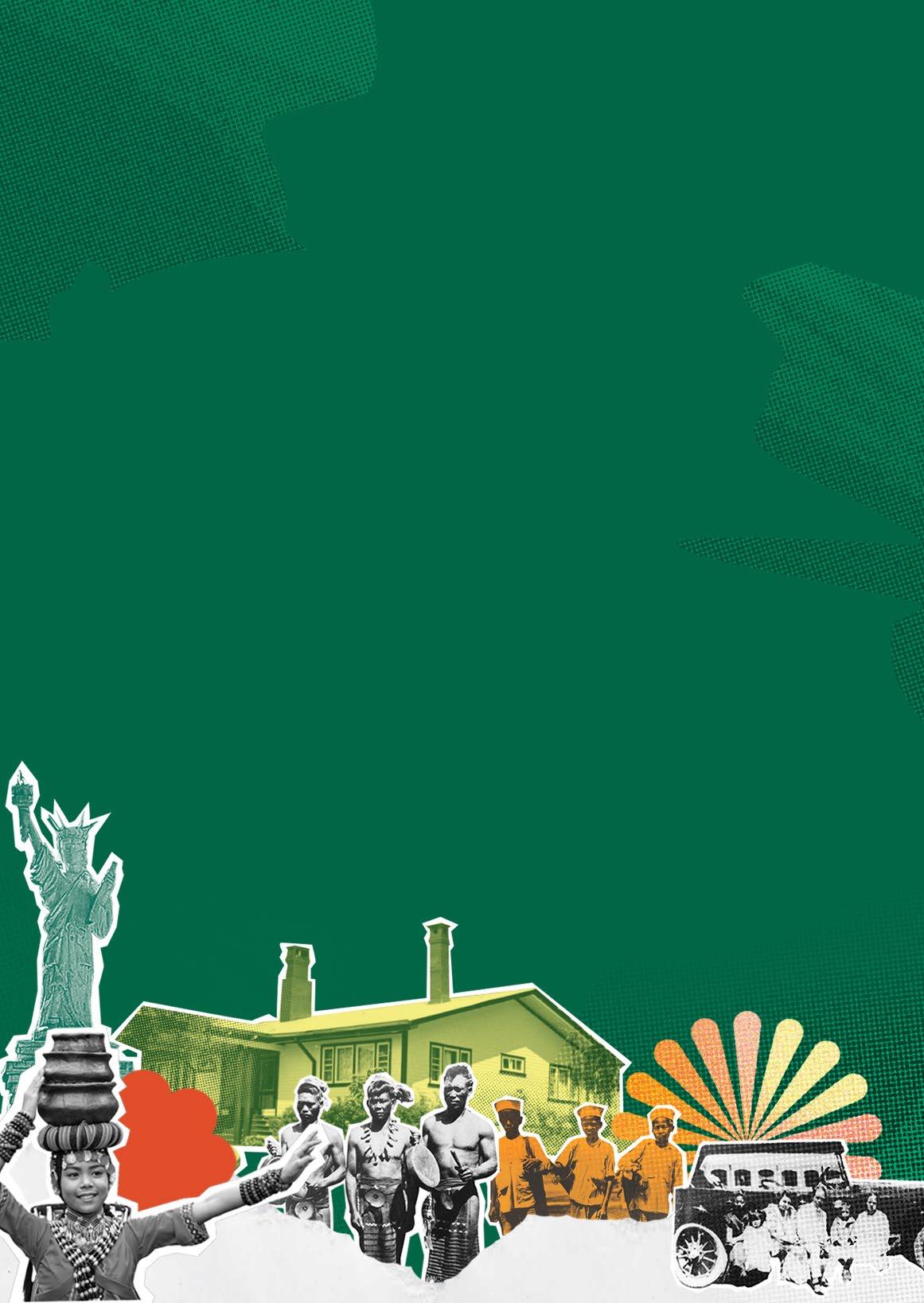
Once a cherished retreat and a significant landmark steeped in history, Camp John Hay is stepping into a vibrant new era under the stewardship of the Bases Conversion and Development Authority (BCDA). This revitalized destination is experiencing a remarkable resurgence, drawing an increasing number of tourists eager to explore its natural beauty and rich heritage. The renewed focus on preservation and sustainable development has breathed new life into the former military rest and recreation facility, transforming it into a prime location for both leisure and investment. The influx of visitors is not only boosting the local economy but also creating a wealth of opportunities for businesses looking to capitalize on the area's growing appeal. From eco-tourism ventures to hospitality services and real estate developments, Camp John Hay presents a fertile ground for investment, promising significant returns while contributing to the area's continued growth and prosperity.
As Camp John Hay reclaims its position as a premier destination, it not only celebrates its significant historical legacy but also paves the way for a brighter future, marked by increased economic activity, thriving communities, and the preservation of its unique cultural and natural assets for generations to come.


Increased occupancy rates, higher average spending by visitors, and a strengthened reputation as a premier destination will contribute directly to the financial well-being of the region.
Furthermore, this revitalized tourism draw will have a cascading effect, benefiting local businesses, restaurants, and attractions, creating a more robust and sustainable economic ecosystem for Baguio.
“As the hospitality arm of Landco Lifestyle Ventures, we take pride in being an enabler of tourism in Baguio. We see it as our responsibility to elevate the guest experience while contributing to the broader ecosystem of local businesses, artists, and entrepreneurs. This isn't just hospitality— it’s community-building,” said Mr. Gregorio.
Integral to this ambitious undertaking is the recognition that a thriving tourism sector is intrinsically linked to a robust workforce. Mr. Gregorio stressed the importance of involving The John Hay Hotels’ personnel and staff in
making this rebrand a success, stating, “Beyond compensation, we’ve committed to fostering a culture grounded in transparency, compassion, and shared purpose. A positive work environment isn’t built overnight—it’s built through consistent support, open dialogue, and genuine concern for the well-being of every team member.”
Moreover, the investment in the hotels extends to their existing employees, with plans for enhanced training programs and opportunities for professional advancement. By fostering a skilled and motivated workforce, the rebranded John Hay Hotels will be wellequipped to deliver exceptional service, further solidifying Baguio's reputation as a top-tier tourist destination and ensuring the long-term success and revenue generation of these iconic establishments, building upon the already significant financial achievements of the BCDA's management of the ecozone.
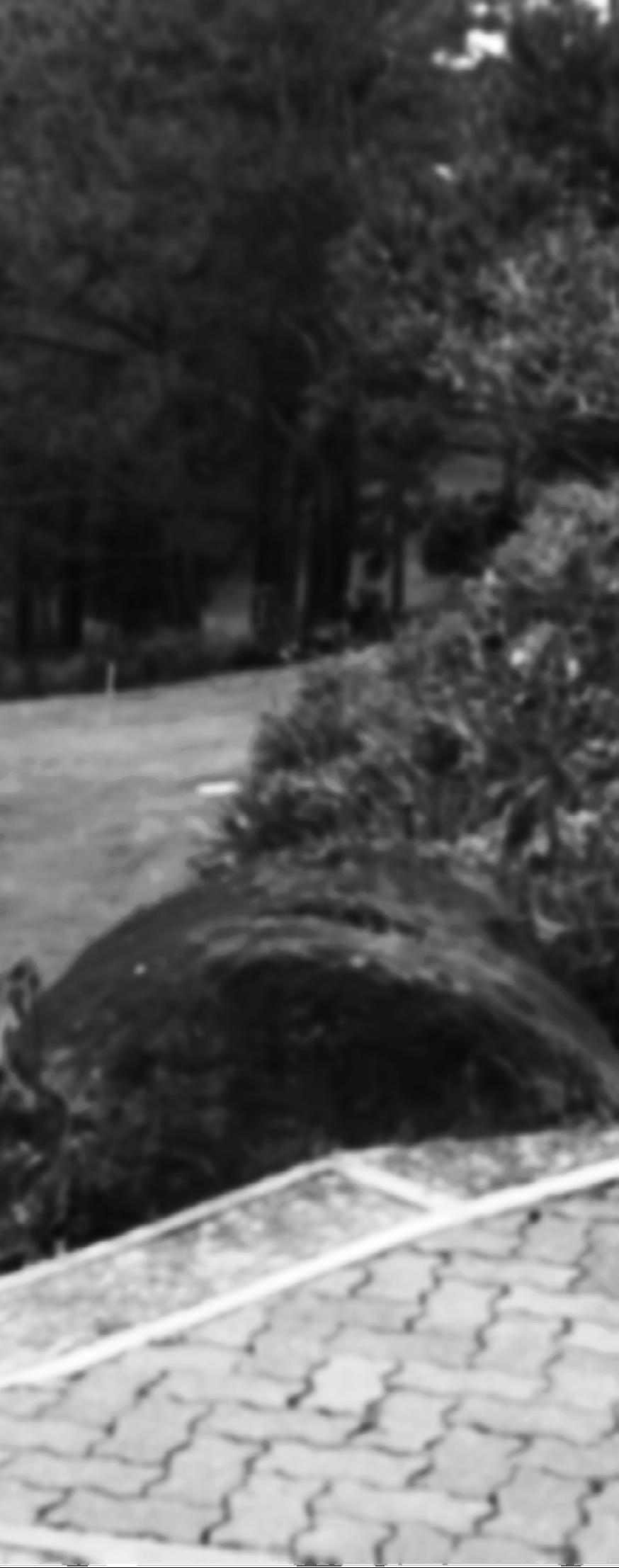
The camp's true son
Mang Ponce
Mang Ponce’s life story is deeply interwoven with the very fabric of this iconic place. Now 58, Mang Ponce has walked Camp John Hay’s grounds since he was two years old. His memories stretch back to a time when US and Filipino soldiers jointly guarded Camp John Hay’s gates and its air thick with unmatched scent of pine and morning dew.
“With a locally knitted bonnet on my head and dressed in layers of thick clothes, I was always excited to tag along with my Papa to work,” Mang Ponce reminisced when asked about his early years in Camp John Hay.
Back then, Camp John Hay stood out as the most spacious and impressive U.S. military facility. Covering a vast 1,764 hectares, it initially provided a haven with around a hundred cottages, a hospital, a chapel, a cinema, dining halls, shops, and diverse amenities for sports and social gatherings.
Once a ballboy for the tennis court and a shagboy for the driving range in Camp John Hay during the American era, Mang Ponce continues his service there today as a cottage attendant at John Hay Management Corporation.
Fast forward to 2025, Mang Ponce is an accomplished father to three wonderful children. He bragged about his son, Jay-ar, who is a certified public accountant. His daughter, Jay Ann, finished a bachelor’s degree in Financial Management and Accountancy; while the youngest, Jo Anne is still in school.
Although the landscape has evolved, Mang Ponce remains an unsung keeper of Camp John Hay's spirit, his recollections offering a vivid glimpse into its past and his enduring presence a testament to its lasting legacy.
Fairway’s walking wisdom
160 John Hay caddies
While the panoramic vistas and crisp mountain air draw golfers to John Hay Golf, the unsung heroes of its storied fairway are the 160 caddies who traverse it daily. They don’t just merely carry bags; they are the walking encyclopedias of the course, their knowledge etched into every match. Years spent under the shifting highland sun or through the misty mornings have instilled them with an almost intuitive understanding of every slope, break, and gust of wind through the pines.
For players, the John Hay Golf caddies are astute observers of swing and stance. Their advice, often delivered with a gentle nod or carefully chosen words, is the wisdom of countless rounds observed. They are the golfers’ silent partners in the pursuit of par, their presence a comforting constant.
The 160-strong caddies’ livelihoods are inseparably linked to the fortunes of the game and the enduring allure of John Hay Golf's fairway, making them not just service providers, but deeply invested custodians of its golfing legacy and its ongoing story.




A living legend
Macto
Horses are woven into the very fabric of Camp John Hay’s identity. It was the sound of hooves that echoed through the trails, drawing locals and visitors alike to the unforgettable horseback experience.
Among these noble creatures is Macto, one of the oldest and most revered horses in Camp John Hay. Now 18 years old, Macto isn’t just a horse; he’s a living witness to the transformation of the camp. Despite his age, Macto remains an epitome of elegance. With every gallop through the trails and over the steep hills, he moves with grace as if the terrain rises to meet him. He’s not just moving through John Hay, he’s commanding it. Yet beneath this elegant exterior lies a surprisingly gentle soul.
Interestingly, there’s a certain whimsy to how these horses are named. Some are named based on their color or more amusingly, after product brands. Take Macto, for instance. His name was inspired by an old milk brand, chosen for no particular reason other than it felt right at the time. Then there’s Sprite, another horse with a name born out of randomness—his owner just happened to love the soda.
Names aside, these horses are more than just trail companions; they’re individuals with their own personalities. Macto is calm, composed and gentle in spirit. He’s also known for his playful antics—especially when he spots a fellow horse he finds attractive –expect that he’ll let out a loud neigh to attract attention, much to everyone’s amusement.
In Macto, we see more than an attraction. He is a living chapter of Camp John Hay’s ongoing story. And as long as he walks those familiar trails, a piece of John Hay’s spirit continues to ride with them.







By Mariedel Irish U. Catilogo
The spoils of war gained by the United States under the Treaty of Paris marked its emergence as a global power. As Secretary of State, John Milton Hay presided over America’s new role on the world stage.
Prior to the Americans’ rest and recreation center in the highlands of Cordillera Mountains, Baguio already made an impression for its unique character that had already reached distant shores. The region’s cool climate and scenery, which is entirely different from the lowlands, fascinated colonizers long before the Americans raised their flag in the Philippines.
FROM KAFAGWAY TO BAGUIO
The mountainous region first caught the attention of the Spanish colonists, who soon gathered data about the highlands climate, plants and animal life and its terrain to pre-empt any plans to establish a post in the area formerly called Kafagway now the city where Baguio stands. The name Kafagway is an Ibaloi term that means "wide open space" or "grassy clearing," reflecting the lush greenery and expansive plains of the area. Likewise,
Baguio is derived from the Ibaloi word Bag-iw, referring to a moss that grew abundantly in what is now Guisad Valley.
FIRST SIGHT OF CAMP JOHN HAY
The earliest known exploration of the area by a Spaniard was in 1624 when Don Jose Alfonso Quirante visited the gold mines of Antamog. But it wasn't until the late 1800s that the Spanish began studying the suitability of establishing a sanitarium in La Trinidad which would later serve as the basis for plans to build









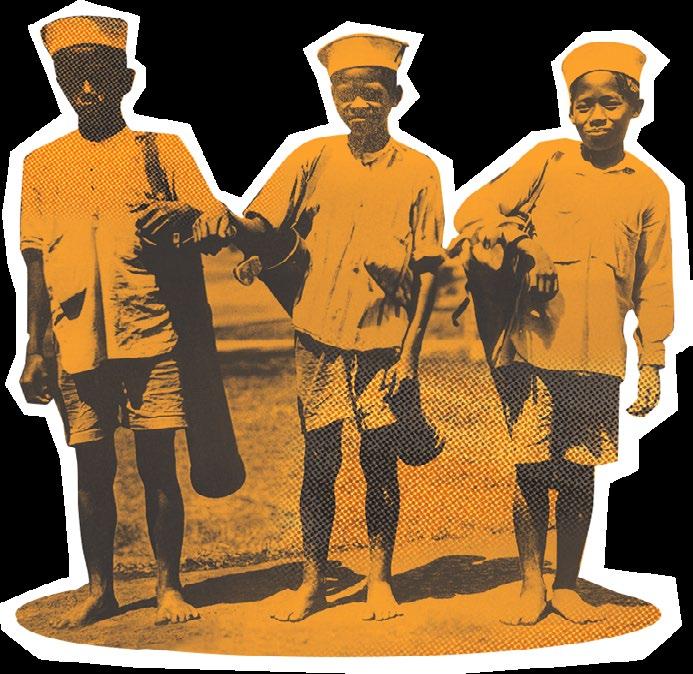
a hospital, sanitarium, and access roads to the area.
It was in November 1899 when American troops stumbled upon Baguio while pursuing Pedro Paterno, one of Emilio Aguinaldo’s closest allies, who had fled to Benguet.
Led by Captain Robert Rudd of Company J, 48th Infantry, the troops established a military outpost near a spring in Baguio, close to what would later become Sheridan Drive and Country Club Road.
What began as a modest one-room headquarters with tents nearby soon evolved into Camp John Hay. This marked the beginning of a development that would forever change Kafagway.
FROM OUTPOST TO LEGACY
Recognizing the potential of the area, the Americans moved swiftly and laid foundations
of what would be tagged as the country’s summer capital. On June 1, 1903, albeit its inaccessibility, the Philippine Commission passed a resolution declaring Baguio as the “Summer Capital of the Philippines.”
For over 10 decades, Camp John Hay came to embody the very best in rest and recreation that the American military could offer its personnel. The establishment of the camp was seen as a cost-effective alternative to sending troops back to the United States to recover from the challenges of serving in the humid Philippine climate.
With the opening of Kennon Road in 1905, the first permanent buildings rose, giving way to a more structured and self-sustaining community.
As demand grew, so did development. Housing, hospitals, and other essential facilities
John Milton Hay
Photo courtesey of US National Archives
Baguio local boys working at Camp John Hay as a caddies "Oldtimers's"
Philippine Scoutsat a Cañao
OldphotoofBellHouse
The success stories of Bonifacio Global City and New Clark City have been major inspirations for building a sustainable and resilient community. Drawing on lessons from these thriving developments, the BCDA emphasizes the importance of eco-friendly, sustainable infrastructure to create a lasting impact on the environment and the economy. The updated masterplan for Camp John Hay places significant focus on green solutions, such as smart solar lighting, renewable energy initiatives, and the preservation of the area’s iconic pine tree forests –an essential element of its charm.
CELEBRATION OF RESILIENCE
Honoring the city’s resilience that weathered adversities, Panagbenga Festival was conceptualized, drawing from the Kankanaey word panagbenga, meaning "season of blooming" or "season of efflorescence."
Primarily a celebration of Baguio’s recovery from the devastation of the 1990 Luzon earthquake, Panagbenga also aimed to honor the rich cultural heritage of the Cordilleras, highlight the region’s flourishing flower industry, and promote environmental conservation. The festival has since become one of the country’s most iconic celebrations, rooted in local identity and resilience, and sparked by JPDC’s vision for renewal and unity through culture.
Celebrated every February, during the coldest time of the year, the festival was warmly embraced by the local government, civil society, schools, and various organizations within the city. Interestingly, the official logo was a slightly modified version of the winning entry from an art competition held specifically for that purpose.



‘THE CAMP THAT YOU ARE’
There is no end to the story that is Camp John Hay. For some reason, Camp John Hay seemed destined for more peaceful purposes, despite being the first place bombed by the Japanese during World War II. Camp John Hay, long on the fringes of military conflict, remains untouched by the horrors of the war and the ravages of natural calamities. The camp kept its aura of having time stood still within its




Amare's dream realized in Camp John Hay
By Joraiah N. Capili
Baguio’s homegrown pizza chain Amare La Cucina is whipping up to expand its culinary footprint with the upcoming launch of its newest branch, Pugon, in Camp John Hay. Serving hearty Italian dishes such as woodfired pizza and pasta, Amare La Cusina has proved itself as a significant player in the city's dining landscape, known for its collaborative and innovative kitchen environment.



Established in 2014, the brand started with simple roots from a 12-seater space at the ancestral home of its founder, Edmark Bustos. The Baguioborn restaurateur admitted that they started with little to no background in pizza-making.
“I knew nothing, I made a pugon (woodfired oven), we just copied it from Youtube and it was even wrong, but it worked. I think that’s the biggest milestone because that’s your first step to do it,” Bustos said.
From its humble beginnings fueled by Bustos' passion for experimentation, Amare has cultivated a culture where chefs and staff







Volcano Pizza

— EDMARK BUSTOS Founder of Amare La Cucina
boasting a larger space, will also serve as a platform to champion local farmers and artisans, underscoring the restaurant's connection to the Baguio community where its story began.
Set to open in 2025, Pugon represents more than just a
new restaurant opening. It signifies the culmination of a local entrepreneur's ambition and a new phase in Amare La Cucina's journey, promising to bring its established reputation for good food and a collaborative spirit to one of Baguio's most iconic locations.








Tranquil abodes
CampJohnHay’shidden residentialsanctuaries
By Mary Grace C. Padin, Arch. Luz N. Panganiban
Tucked away from the bustling ecotourism spots and nestled among rustic pine trees and lush greenery, several country-style homes quietly grace the landscape inside Camp John Hay.
Clustered into five subdivisions, namely, VOA Log Homes, Forest Cabins, Forest Estates, Country Homes and Country Estates, these residential properties serve as the perfect sanctuary for families and individuals who seek a peaceful refuge from the hustle and bustle of the city, or those who simply want to escape from the country’s heat.
These elegant structures radiate timeless charm, with country-inspired designs that balance earthy aesthetics with functionality. They blend seamlessly with the Baguio’s foliage and terrain, creating the ideal nature retreat.
A hidden sanctuary
Camp John Hay has a rich history tied to the Philippines’ military relationship with the United States. It served as a rest and recreation facility for American soldiers
before its turnover to the government in 1991, and this essence and purpose continue to live on through these residential estates.
Families and individuals who lease these properties have the exclusive opportunity to call Camp John Hay their second home—a lifestyle that comes with a serene environment enveloped by nature’s embrace, and, of course, the much-sought-after cool Baguio air.
And as a nod to Camp John Hay’s past, the residences are largely inspired by American architecture, featuring simple, functional designs that emphasize natural elements and warm-toned finishes. They also boast attics, terraces, and fireplaces—features typical of old Baguio houses.
Blending with nature
Rooted in sustainability and respect to Baguio’s natural ecology, residential estates inside Camp John Hay echo the tones and textures of the landscape, adapting to the natural contours of the land and complementing the green backdrop of surrounding forests.
The buildings were constructed to follow Baguio’s rolling and sloping terrain, using natural materials like wood and stones, with a deliberate focus on environmental harmony. Each house is endowed with vast open spaces, with immaculately kept gardens filled with plants and flowers indigenous to the Cordilleras, like Benguet pine, azaleas, impatiens, and other botanical life, such as Norfolk pine, golden bottlebrush, and cypress.



Country Homes
Offering serene views of John Hay Golf, Country Homes features elegant two-storyhouses designed for comfort and practicality. The horizontal wood cladding brings a modern, sleek look, while Baguio stones add a rustic texture to the design, seamlessly blending contemporary and natural elements. Given the sloping terrain, the houses are designed with stair access and partially exposed basements, allowing the structure to adapt seamlessly to the natural topography. The wooden handrails create a welcoming ambiance, enhancing the country-inspired aesthetics of the residential properties.

Indigenous plants from the Cordilleras
Benguet Pine Impatiens Azaleas
Forest Cabins
Forest Cabins are duplex houses characterised by decorative trusses and columns crafted from logs, prominently featured at the frontage of the building. The Baguio stone cladding and asphalt roof shingles introduce a rustic charm to the design, while the horizontal wood paneling on the walls blends modern aesthetics with a natural touch.
Like other estates, each unit features dormers for the attic, a cozy fireplace, and concealed gutters, ensuring both functionality and stylistic appeal.
As each residence comprises two adjoining units, grass hedges line the space at the front to divide the entrances. The buildings are framed by open spaces with vibrant flower beds and structured landscape, creating a harmonious and inviting atmosphere.

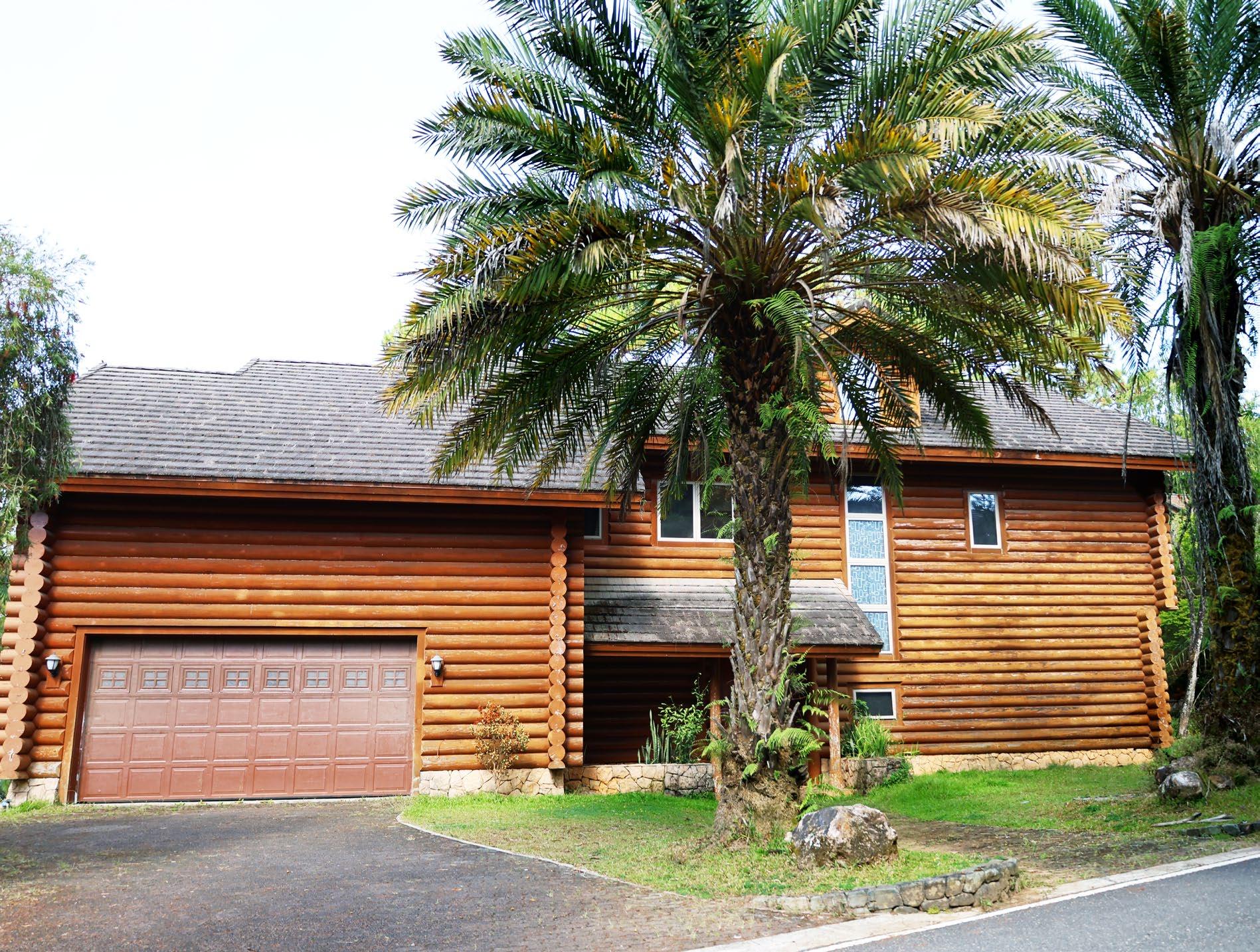
VOA Log Homes
Perched atop the hills and overlooking the Loakan Road and Barangay Happy Hollow, VOA Log Homes are defined by their structures made of imported cedar pine logs and hardwood floors, with chimneys and fireplaces reinforced with piedra stones. Upon arriving, residents are welcomed with a well-manicured lawn and a prominent entrance accentuated by porous concrete pavers. They feature large glass windows and spacious verandas, allowing residents to enjoy natural light and Baguio’s cool, refreshing climate. The structures are protected by asphalt roof shingles, with concealed gutters to prevent clogging from pine needles.


place that had long captured my imagination.
As I stepped out of the vehicle, I felt the thick air with the scent of damp earth. The entrance itself offered a dramatic glimpse of what was concealed ahead, and the path leading to the gorge felt like an invitation to explore. With each step, anticipation grew. Slowly, the sounds of the outside world began to fade, replaced by the gentle symphony of nature—the rustling of leaves, the chirping of unseen birds, and the whistling sound of the wind.
And then, it unfolded. The towering rock formations of the Tutulari Avatar Gorge rose before us. Sculpted by time and the relentless flow
of water, they stood like ancient sentinels guarding a secret paradise. The sheer scale of the gorge was breathtaking, dwarfing everything around it.
As I ventured deeper, I can imagine the beauty of the rushing emerald-green water from hundreds of years ago, reflecting the sunlight, and snaking its way through the gorge.
Standing there, at the heart of Tutulari, felt like stepping into a painting. The raw, untamed beauty was overwhelming, a testament to the power and artistry of nature. Every angle offered a new perspective. The aesthetics and the natural artistry of the gorge
2024, when he heard reports of sightings of a rare bird, the Spoon billed Sandpiper. The migratory bird was seen across the Luzon coastline, from Bataan, Pampanga and Las Piñas in Metro Manila.
"Since March 2024, I have documented sightings of 24 distinct migratory species with sightings at the Poro Point Baywalk alone," shares Mr. Brioso, whose fieldwork has documented a remarkable biodiversity including Kingfishers, Brown Shrikes, Swallows, Common Terns, as well as various wading bird species such as Herons and Egrets.
The coastline of the Poro Point Baywalk is not only an ideal spot for birdwatching, but also serves as a temporary nesting area for various shore-based migratory birds such as Red-necked Stints, Ruddy Turnstones, Tattlers, Sandpipers, and Sanderlings. These birds come all the way from Alaska and other cold countries, seeking refuge along the shores of the Poro Point Baywalk.
Bird specialists like Mr. Brioso conducts meticulous monitoring with the support of the Department of Tourism’s ecotourism initiative. The Poro Point Baywalk maintains its status as an important area in the landscape of global biodiversity. It also enriches the natural value of La Union and highlights its role in global conservation.
To the untrained eye, most people do not notice these migratory birds that may seem ordinary but unique. But with the help of professional birdwatchers, visitors can appreciate these species as they seek shelter in our local ecosystem.
Poro Point Baywalk is more than just a scenic tourist spot, it is also a testament of conservation and sustainable development, encouraging everyone to watch and appreciate the beauty of migrating birds in their natural environment.

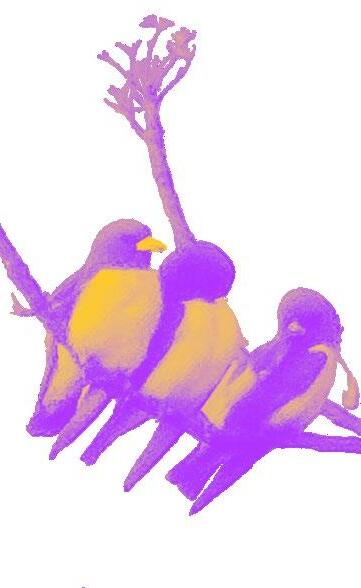


Pacific Reef Heron
White-breasted wood swallos
Medium Egret
Grey Heron

INVESTMENTS IN CAMP JOHN HAY SOAR TO PHP1B IN JUST TWO MONTHS
Investments in Camp John Hay in Baguio City soared to Php1 billion in less than two months since the Bases
Conversion and Development Authority’s (BCDA) recovery of the property in January 2025. This reflects the business sector’s trust and confidence in BCDA’s track record and its plans of transforming the iconic destination into a premier ecotourism and investment hub.
BCDA reported that it had already signed 75 residential and commercial lease agreements in Camp John Hay, totaling around Php1 billion in investments. This milestone enables BCDA to bring in more job and economic opportunities to the local community
and contribute more to the state coffers.
Some of the major industry players and small- and medium-enterprises that have already begun to pour in investments in Camp John Hay are Metro Pacific Investments Corporation (MPIC) subsidiary Landco Pacific Corporation, Stern Real Estate Development Corporation, Amare La Cucina, Golfplus Management Inc. (GMI), DuckWorld Philippines, and Top Taste Trading Inc.
Of the 75 contracts signed in two months, 70 were residential lease agreements signed with local and foreign nationals, including Koreans, while the remaining were commercial lease agreements.
Bird's eye view of The John Hay Hotels PhotocourtesyofJanDarrenGuiwan
"Numbers don’t lie. Breaching a billion mark in just two months is proof that Camp John Hay is thriving as more and more investors are seeing its potential of becoming the country’s next ecotourism and investment hub under the management of BCDA,” said BCDA President and Chief Executive Officer Joshua M. Bingcang. “More exciting things will be announced soon, as we set to close more contracts and deals in the next weeks.”
Several guests and visitors said they noticed improvements in amenities and services since BCDA took over, in partnership with MPIC subsidiary Landco Pacific Corporation as the interim manager of the John Hay Hotels, and the consortium of GMI and DuckWorld PH overseeing the operations and maintenance of John Hay Golf.
Engr. Bingcang also said that BCDA is conducting a review of the comprehensive master plan of the John Hay Special Economic Zone (JHSEZ) to align it with the United
As we bring in economic opportunities that will benefit everyone, we want to assure the local community that we will protect and preserve the vast forested area and open spaces of Camp John Hay."
Engr. Joshua M. Bingcang
President and CEO Bases Conversion and Development Authority
Nations' 17 Sustainable Development Goals. Moreover, the BCDA is in coordination with the Baguio City Government on improving jogging trails and pedestrian lanes, installing solar street lights, and establishing a smart transport system. Having regained control of the 247-hectare Camp John Hay property, the BCDA is actively pursuing developments to restore the full potential of JHSEZ for the benefit of all Filipinos.
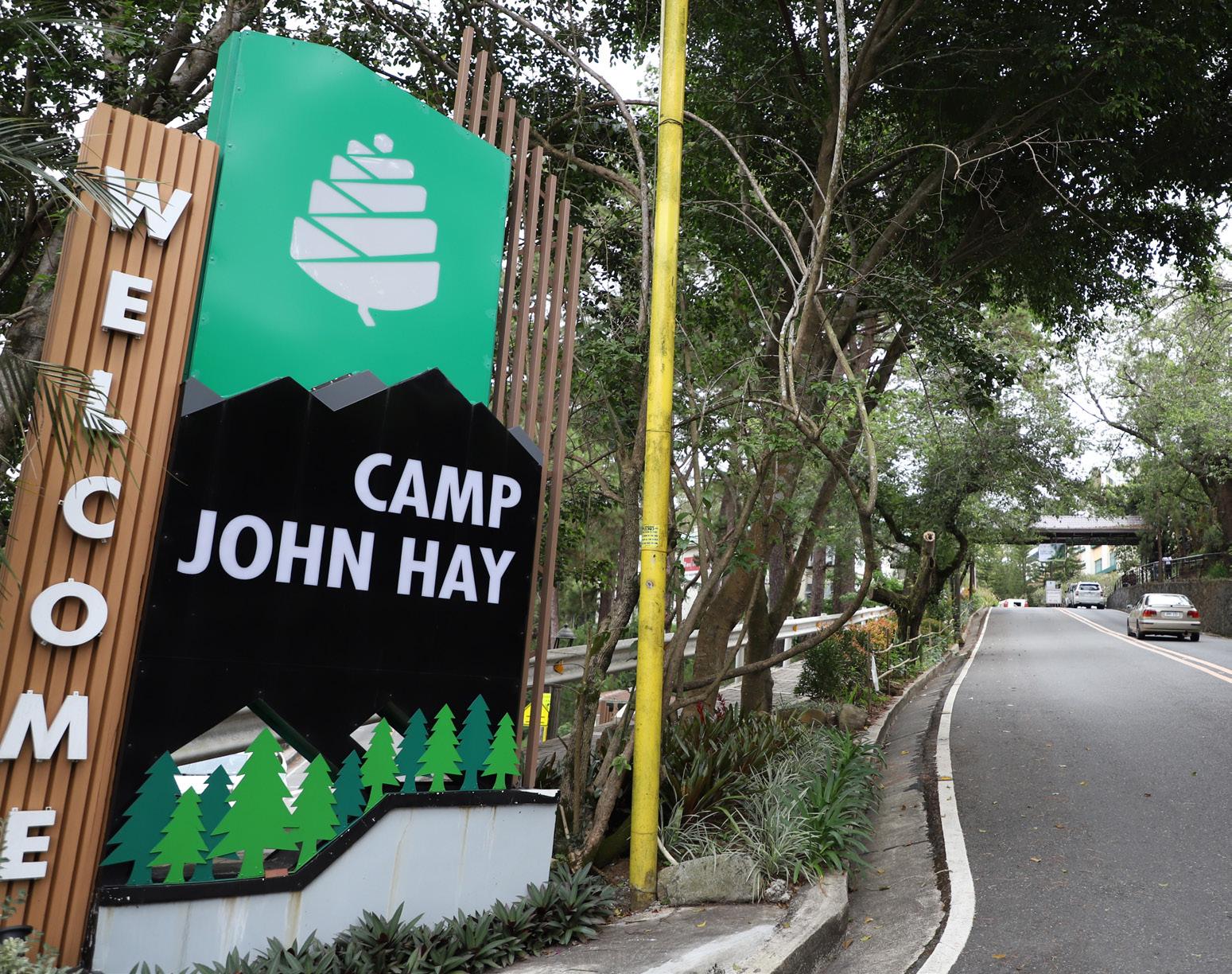
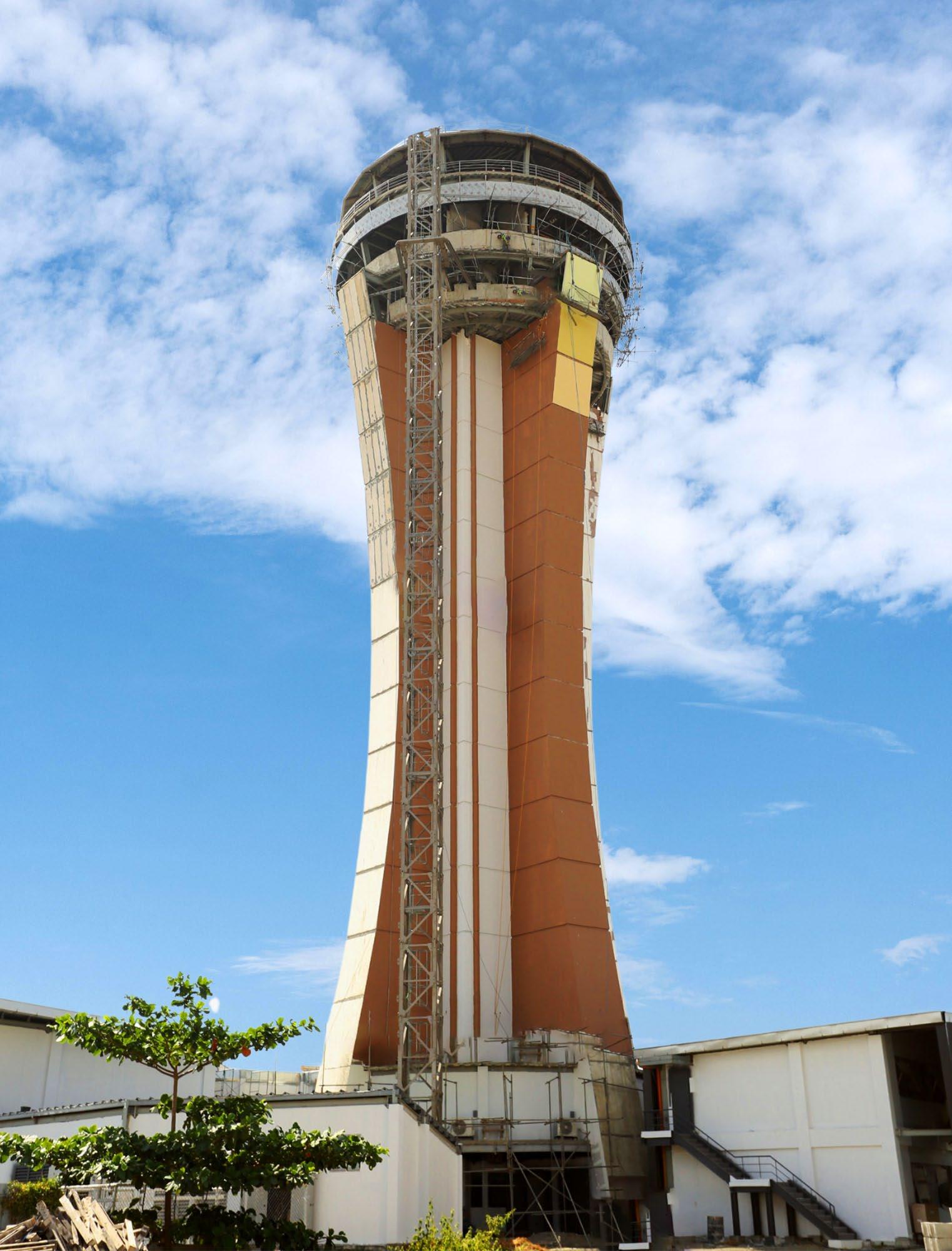

Clark Air Traffic Control Tower
Poised to be the tallest control tower in the country, the Clark Air Traffic Control Tower is an 18-storey structure, seen within the area of the Clark Aviation Capital aimed at improving Clark’s air traffic control system as the airport gears up to host more flights and travelers. The project construction is expected to be completed by the second quarter of 2025.

Clark International Airport in Pampanga
